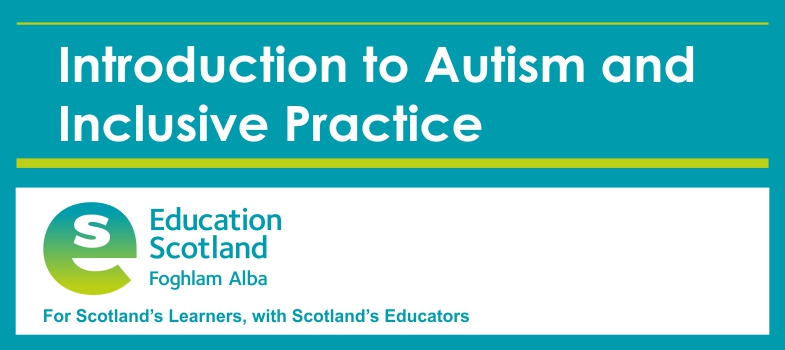3.5 Environment
The environment can make a lot of demands on autistic learners. Using the CIRCLE collaboration approach, the Toolbox and this module focuses on three main focus areas when exploring the environment:
- physical
- social
- routines.
Physical environment
The physical environment consists of the sounds, smells, lighting, layout and visual aesthetic of a space and can all have an impact. It is important that reasonable adjustments are made to the classroom environment to reduce as many barriers to learning as possible. As with any child or young person, barriers will differ depending on the individual. Any adaptations can often benefit all learners in the classroom, not just the autistic learner.
The structure and ethos of the classroom are important tools for helping autistic learners understand expectations and access the curriculum. All learning environments should provide a positive influence and clear structure for autistic learners. This encourages independence and helps reduce anxiety. A well-organised, calm, supportive classroom with clear structure and routines can help make the environment a more predictable and accessible place, reducing distraction and confusion. This can include regular breaks throughout the day with access to different activities, some of which are multisensory. Where possible, practitioners should create physical structure, either using furniture or even tape or a mark on the floor. They should make the function and any accompanying rules of each area as clear as possible. They should carefully consider the seating arrangements in the classroom. Autistic learners may benefit from access to a quieter, distraction-free area in the class. The movement of other pupils as well as staff within the layout of the class is another aspect to consider, particularly where several staff members may work within the room.
Consideration of visuals within the classroom space is important. Busy displays and posters can be very distracting to an autistic learner. As a general rule, practitioners should aim for a clutter-free, low-stimulus environment. A well-organised classroom with stored items, equipment and books in clearly labelled cupboards/areas will promote independence as well as reducing distraction. The use of visual supports, at an appropriate developmental level, is expected for autistic learners. As with all supports, these should be regularly reviewed.
Social environment
The social environment is concerned with the attitudes, expectations and actions of those within the class and how these can affect autistic learners, either positively or negatively.
Practitioners should aim to develop a classroom culture where autistic learners feel valued and secure, individual differences are respected, and diversity is highlighted and celebrated. These children and young people learn best when they can focus on a task and are not anxious or worried. Practitioners should reduce stress by considering each learner’s competence. When children and young people have difficulty with retaining information, understanding instructions or the complexities of language used, practitioners should differentiate their own language and instructions, as a routine part of their practice e.g. say less, slow down your rate of speech, stress key words and use visuals to support understanding. Using a variety of teaching styles and allowing additional thinking/processing time can be valuable.
Routines
Routines are events that happen in the same way with regularity. The start, middle and end of the routine becomes predictable through repetition. Daily routines help autistic learners to know and anticipate what comes next, and social routines help them enjoy and interact with others. Autistic learners benefit from a degree of order and consistency in their lives. It may be useful to consider routines in terms of how the day/week is structured and how lessons are delivered.
Autistic learners may need developmentally appropriate visual support to help them recognise predictable routines and additional visual supports to help them understand changes to these routines. Having a consistent format for the start, middle and end of each lesson can be beneficial. Preparing learners for change, for example, giving clear notification (preferably communicated visually) if another member of staff will be covering the class, can be very beneficial. Simple approaches such as having consistent seating plans can help reduce the risk of anxiety or distraction and setting regular days for giving out and collecting homework can help learners develop good habits for completing it.
Practitioners should consider using a consistent format to lesson delivery, which can help autistic learners know what to expect, so that they can be prepared. Stating the learning intentions at the start of the lesson, ensuring that these are understood and referring to them regularly may help learners at conversation partner stage to focus. Reviewing and summarising learning outcomes may help these autistic learners understand if their personal learning targets have been achieved. Practitioners should encourage autistic learners to see themselves as respected and useful members of the class. This can be promoted by regularly assigning positive roles e.g. group leader or peer supporter. This can help reduce negative views that some autistic learners may have of themselves.
3.4 Supporting communication
